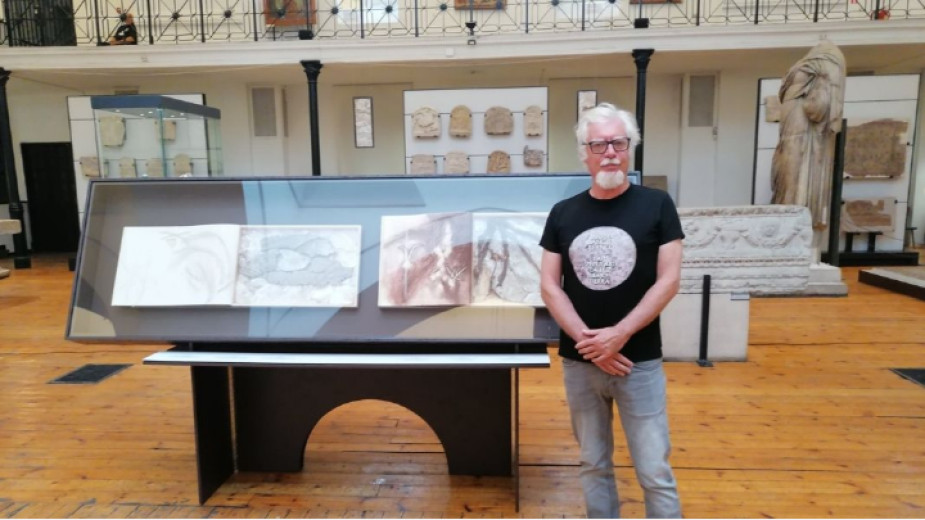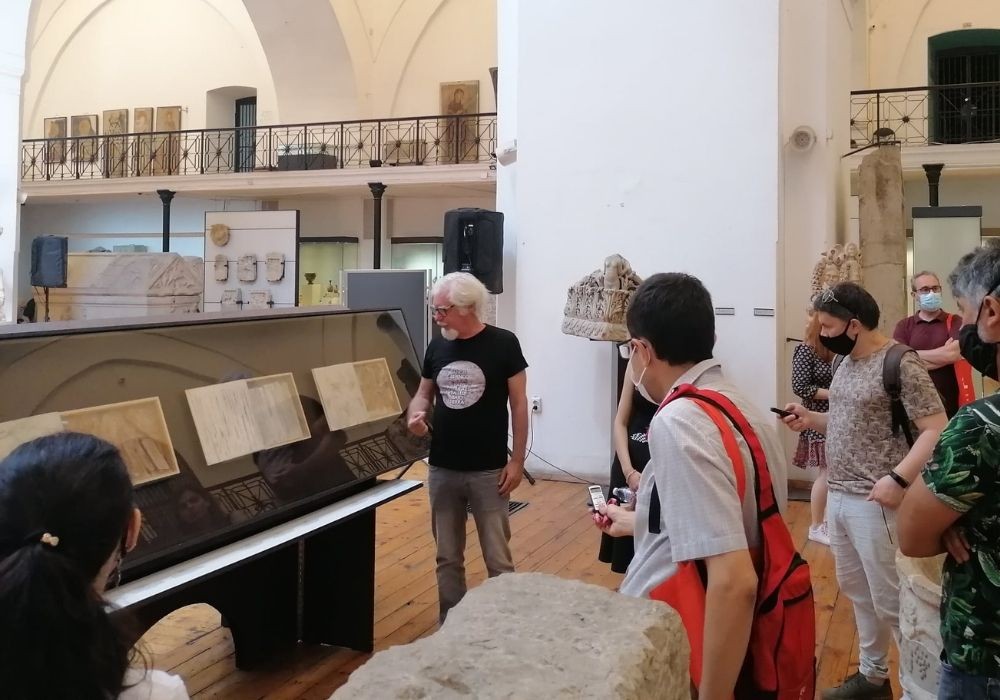 4
4
Is it possible for an archeological museum to be the most suitable place for a modern art exhibition? The answer can be found in the spacious central hall of the Archaeological Museum in Sofia, where the exhibition "Lapis specularis. Underground Light” by Spanish artist Miguel Ángel Blanco is presented.
This extremely interesting exhibition consists of 23 book-boxes, in which visitors can find creative compositions of Lapis specularis, known as selenite or moonstone. The boxes are part of the most significant and large-scale project by the artist - Library of the Forest, composed of 1,208 such boxes containing natural elements such as plants, insects and minerals.

By placing his works in a space linked to archeology, Miguel Ángel Blanco takes us back to the era of the Roman Empire, when modern glass was not yet present in the life of the Romans. With Lapis specularis light began entering the daily lives of the people of that time.
"They used it to make windows, small greenhouses, or used it as glass to monitor the work of bees," Miguel Ángel Blanco has told Radio Bulgaria. The artist points out that as a visual artist he was attracted mostly by the magical and ritual application of selenite. But how did he decide to use this crystal as a material for his works?
“I have studied the realm of minerals very thoroughly. I own a large collection of minerals, perhaps the fourth largest in Spain. I have a very special attitude towards transparent minerals. I have a special collection of mica. They are also very transparent and logically I got acquainted with moonstone. I had gained momentum in the search for transparency and light and that attracted me to the mineral.”

The Romans believed in the enormous magical power of this stone. In what rituals did they use it?
"Apart from hanging pieces of stone on trees to restore their fertility, they wrote curses or wishes on small crystals. They threw these crystals into wells because over time, selenite dissolves and they believed that in entered the underworld.”
Miguel Angel Blanco points out that Lapis specularis was a revolutionary discovery for ancient Rome. But what exactly is it?
"It's crystallized gypsum. In those distant times, glass was not transparent enough and people could not use it for their windows. Roman emperors like Livia and Augustus were the first to see Rome through Lapis specularis glass. The most important mines for selenite were located in Spain. The crystal was transported to Cartagena and from there it was transported to the Roman Empire,” the artist tells us. “I have visited some of these mines. Access to some of them is difficult. This is how I got fragments and pieces that I used to create my works.”

The exhibition “Lapis specularis. Underground Light" is to remain in the Bulgarian capital city until September 26, 2021. The exhibition has already been presented at the National Archaeological Museum in Madrid and is now visiting the Bulgarian capital city, known in ancient times as Serdica, with the help of the Cervantes Institute in Sofia.

English: Alexander Markov
Photos: sofia.cervantes.es
Sylvia Tomova, a star of the Bulgarian stage, received her training at the Vaganova State Ballet Academy in Saint Petersburg. Her career has been closely linked to the National Opera and Ballet, where, as a prima ballerina, she has performed over 90..
Canada-based Bulgarian artists Petar Boyadzhiev and Daniela Zekina will present their joint exhibition “AlterEgo” in Chicago on November 1 . Their new paintings with graphics and paintings will be exhibited at the “Bagrena” Gallery at the Bulgarian..
The Bulgarian-English co-production “Devil’s Play” won the Best Cinematography Award at the prestigious Chelsea Film Festival in New York, announced the Consulate General of Bulgaria in New York on Facebook. The film was screened as part of the..

+359 2 9336 661
